Photographing the Lyrid meteor shower.
The Lyrid Meteor Shower is an annual meteor shower that takes place in April of every year. In 2020 it peaked on the night of April 22 and morning of April 23.
From Wikipedia; “The April Lyrids are a meteor shower lasting from April 16 to April 26 each year.[4] The radiant of the meteor shower is located in the constellation Lyra, near its brightest star, Vega. The peak of the shower is typically around April 22 each year.
The source of the meteor shower are particles of dust shed by the long-period Comet C/1861 G1 Thatcher.[1] The April Lyrids are the strongest annual shower of meteors from debris of a long-period comet, mainly because as far as other intermediate long-period comets go (200–10,000 years), this one has a relatively short orbital period of about 415 years. The Lyrids have been observed and reported since 687 BC; no other modern shower has been recorded as far back in time.”
Around noon on the 22nd I decided I might as well load up the OGT Exp 2.0 and look for some dark skies to try and photograph the shower. The local forecast for the night was heavy cloud cover, so I headed 3 hours north for clear skies and less light pollution.
The first two locations I scouted out via my different satellite maps turned out to be on private property (most of north east Colorado is apparently), so I end up staying overnight at my emergency location. That was right in the middle of a wind farm!
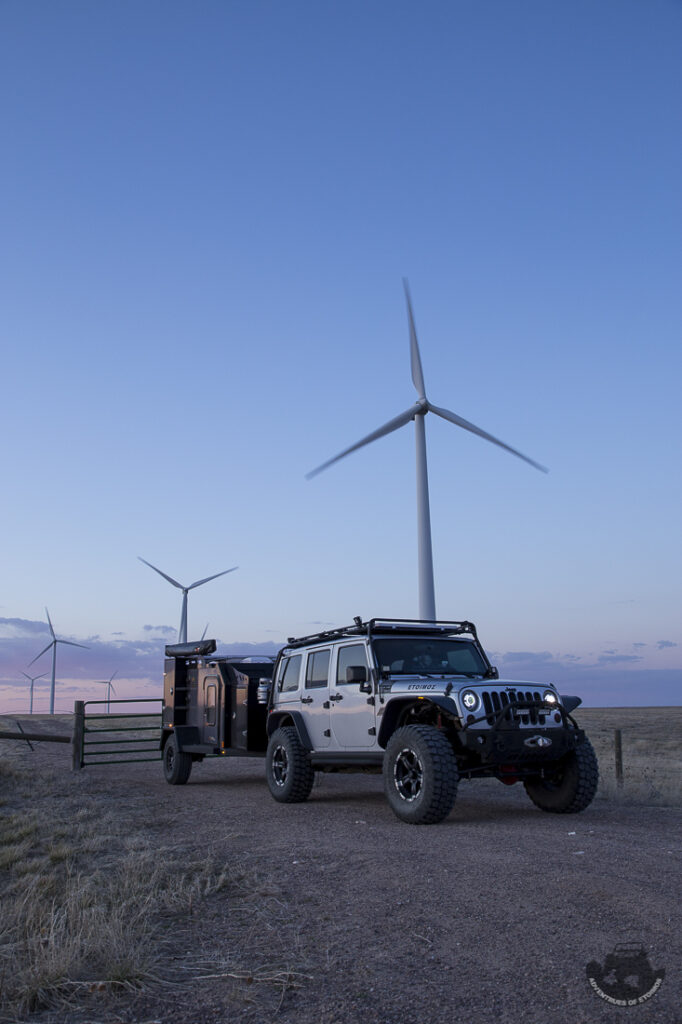
At least my late evening arrival meant that I did not have long to wait for night to fall. I was treated to a very pretty sunset and then I ate a PB&J sandwich for dinner and listened to my audio book (Steven King’s “The Stand”) until about 8:30pm. Then it was off to bed for a few hours of sleep before I started photographing the meteor shower. The Off Grid Trailers Expedition 2.0 makes it super easy to setup camp on those nights when you pull in late.
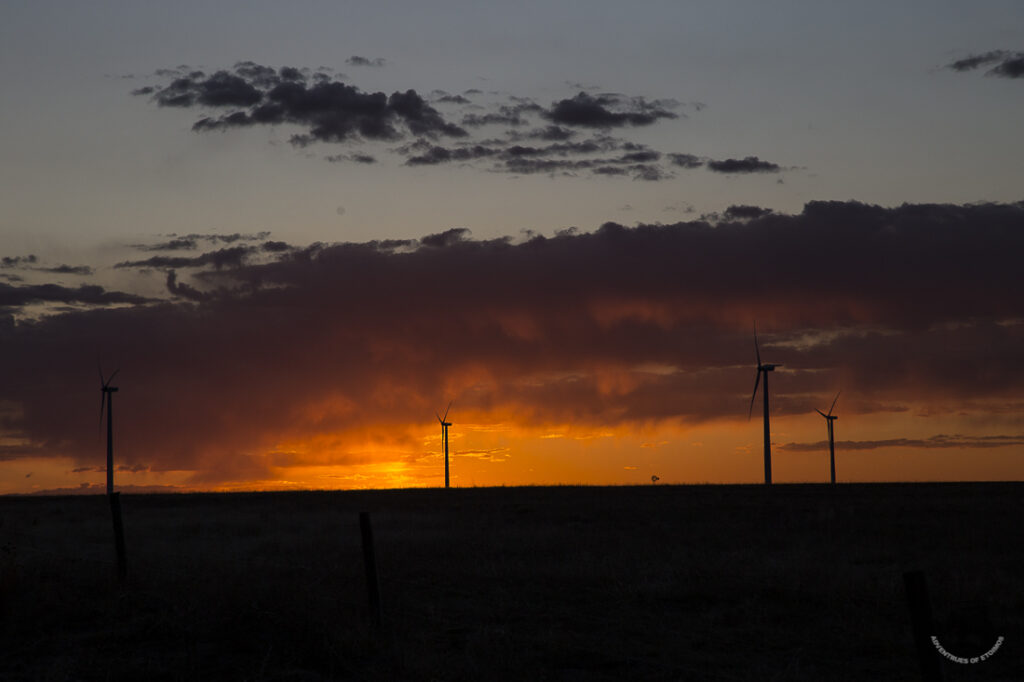
After about a four hour nap, I got up and began taking photos of the meteor shower. This consisted of taking a single photo every 20 seconds for several hours. In order to capture the meteors, you need to have your shutter open for as much of the night as you can, but to get stars that look like points of lights and stead of trails, you have to keep your shutter speed kind of low. This means lots and lots of images during the night. And since there is only 1 to 3 meteors a minute and your camera is only looking at a small section of the sky, you end up with a lot of those image without meteors in them. The typical of a meteor shower consists of several photos combined together to show “the shower”. Such is the case with this image:

The moonless night also meant it was a good time to take some Milky Way photos, which is one of my favorite things to do.
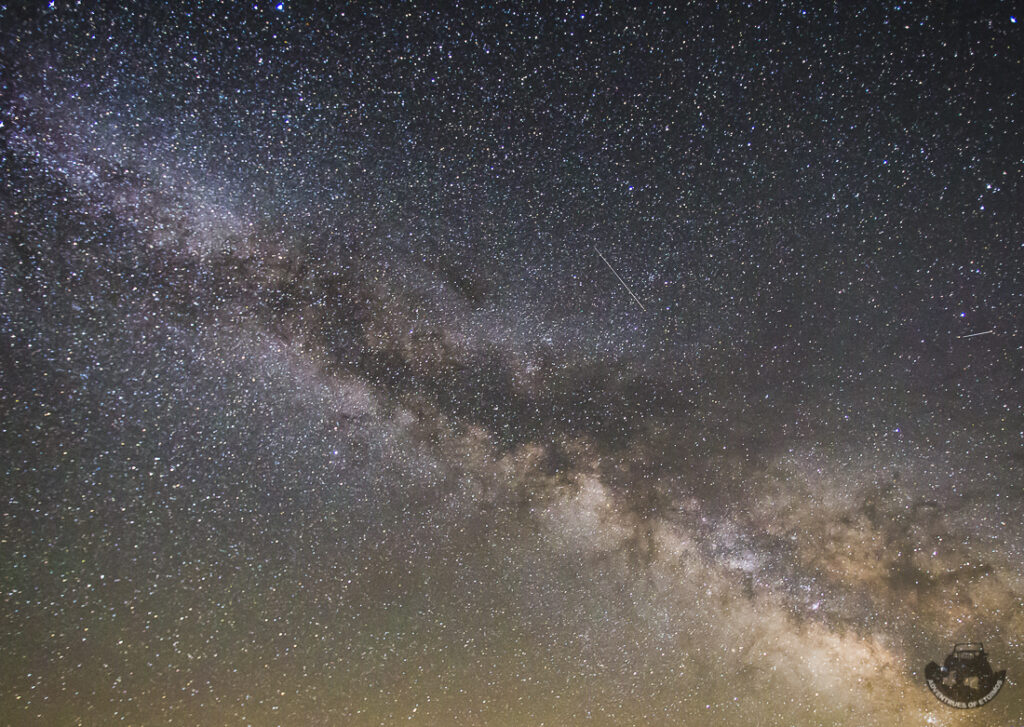
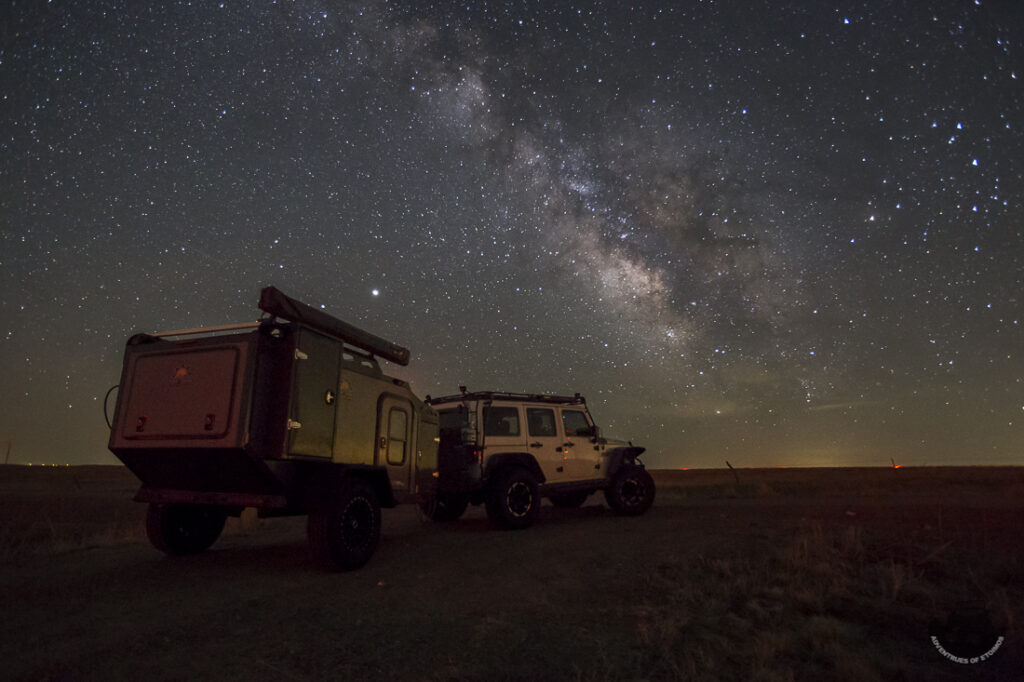
By around 4:00am I was all packed up and headed back home for a full day of telework. But of course I had to stop for a few more photos of the wind farm in the morning light.
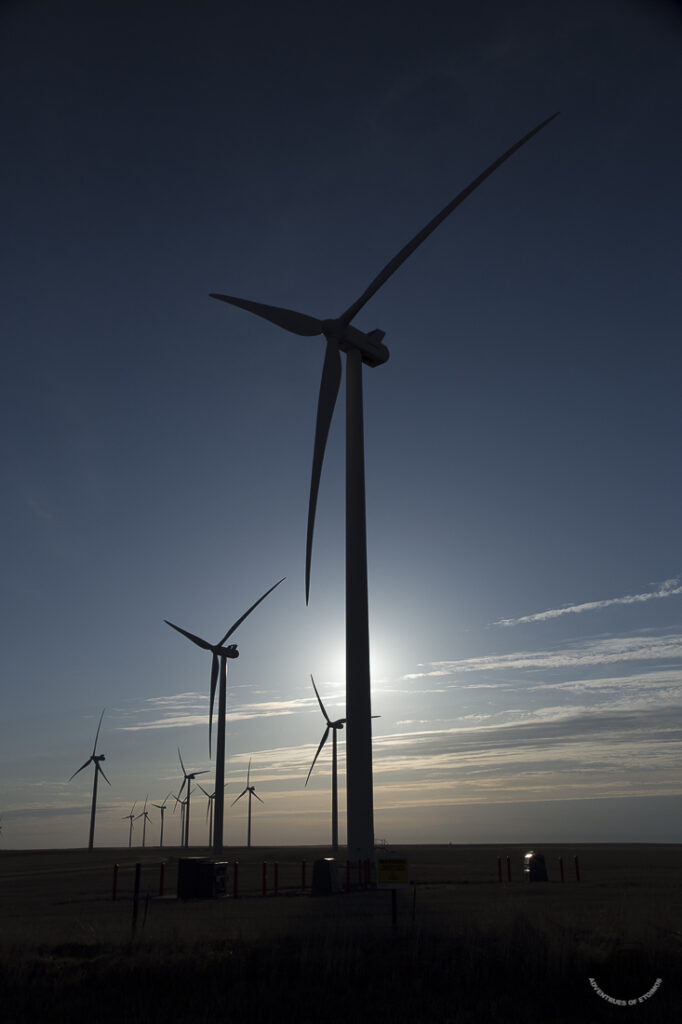
I did not know it at the time, but this was to be the last outing in my beloved Jeep Wrangler Unlimited Rubicon…
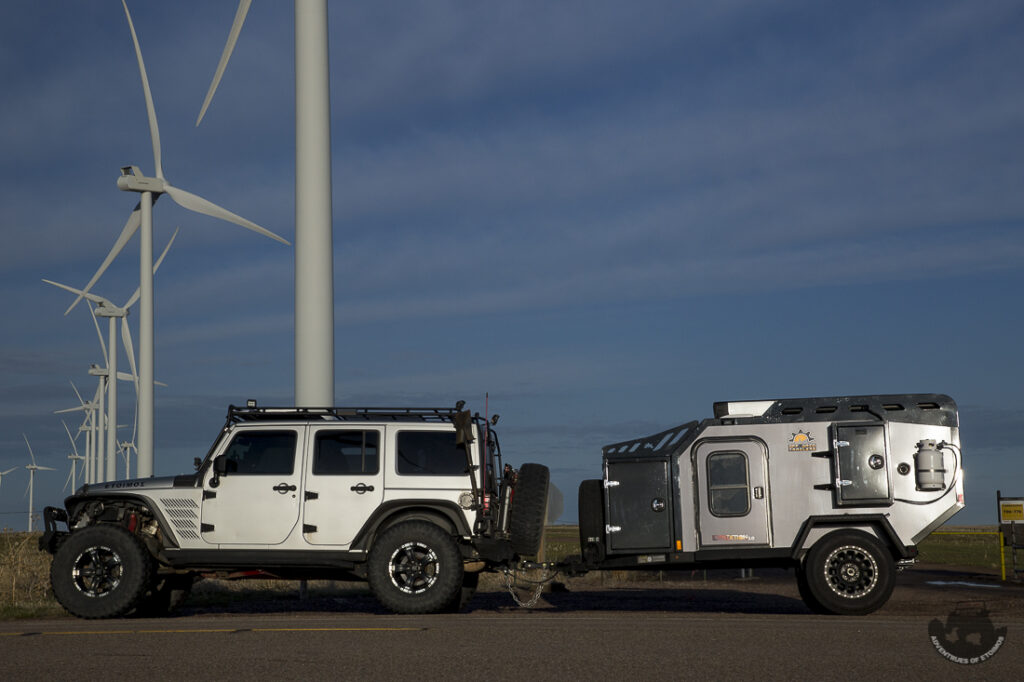
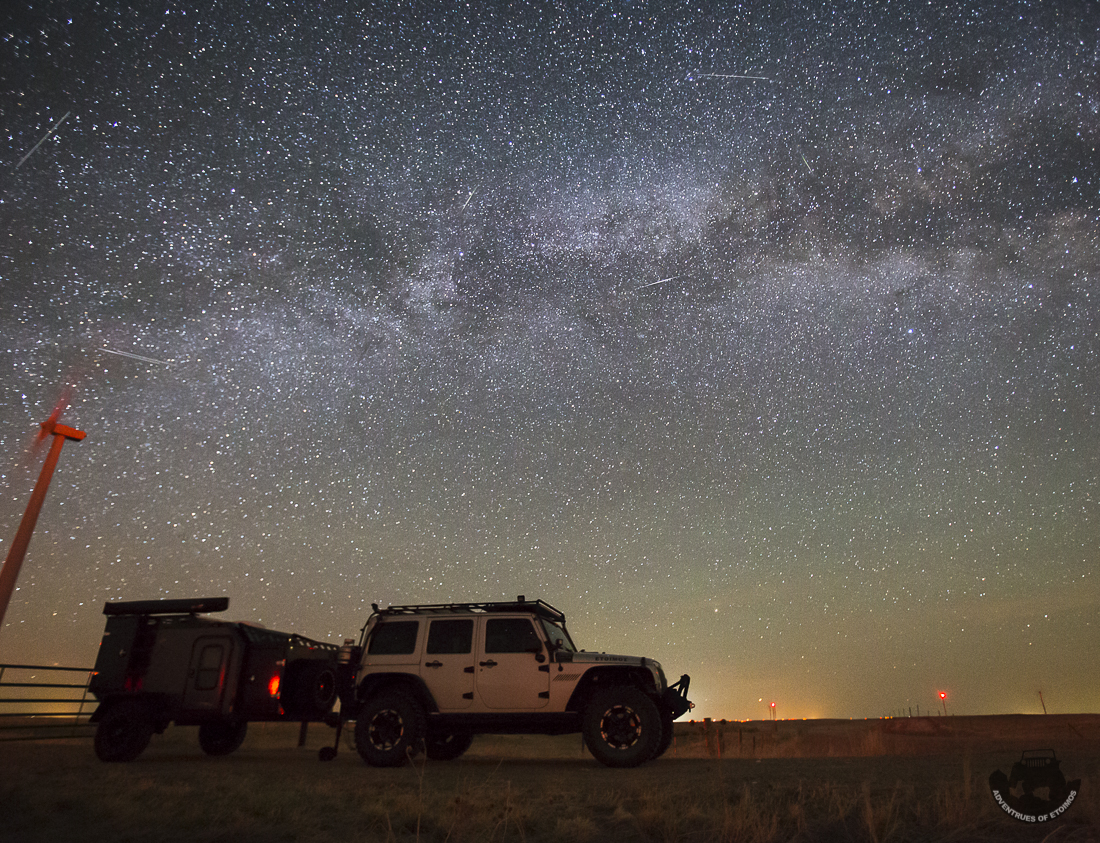
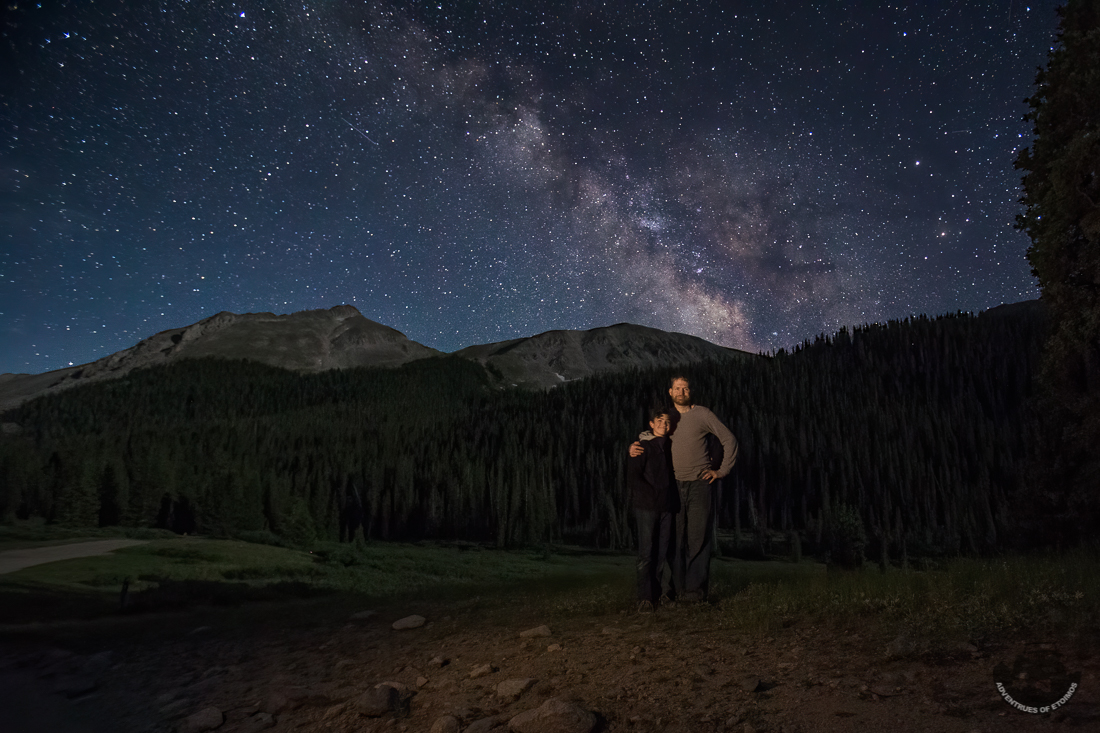


Leave a Reply